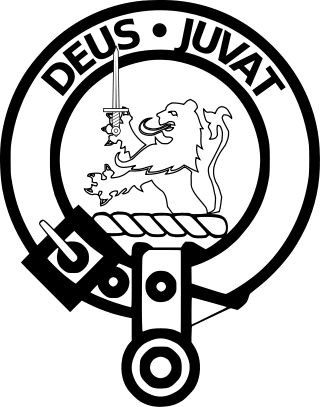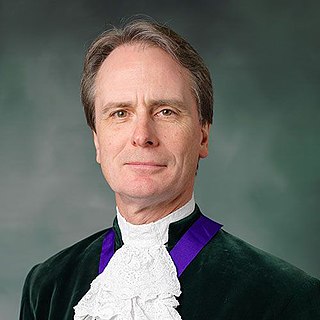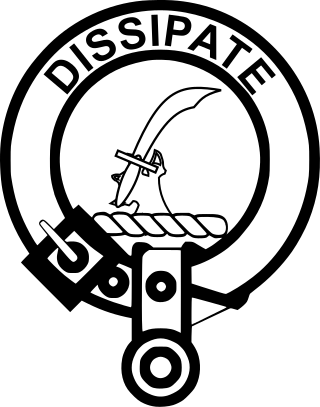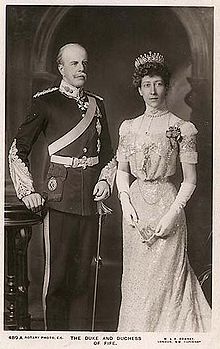
Alexander Arthur Alfonso David Maule Ramsay of Mar DL was the only child of Princess Patricia of Connaught, who renounced her royal title and style when she married then-Captain the Hon. Alexander Ramsay in February 1919. His mother was the youngest child of Prince Arthur, Duke of Connaught, the third son of Queen Victoria and Prince Albert. His father was the third son of John Ramsay, 13th Earl of Dalhousie. Through the marriage of his maternal aunt, Princess Margaret of Connaught, to the Swedish prince who later became King Gustav VI Adolf of Sweden, his first cousins included Prince Gustaf Adolf, Duke of Västerbotten, whose son later became King Carl XVI Gustaf of Sweden; and Princess Ingrid of Sweden, who later became Queen of Denmark after marrying the Danish prince who later became King Frederick IX of Denmark.

Alexander William George Duff, 1st Duke of Fife, styled Viscount Macduff between 1857 and 1879 and known as the Earl Fife between 1879 and 1889, was a British peer who married Princess Louise, the third child and eldest daughter of King Edward VII and Queen Alexandra.

Duke of Fife is a title in the Peerage of the United Kingdom that has been created twice, in both cases for Alexander Duff, 1st Earl of Fife. In 1889, Lord Fife married Princess Louise, the eldest daughter of Albert Edward, Prince of Wales and a granddaughter of Queen Victoria.

Lord Macduff, the Thane of Fife, is a character and the main antagonist in William Shakespeare's Macbeth (c.1603–1607) that is loosely based on history. Macduff, a legendary hero, plays a pivotal role in the play: he suspects Macbeth of regicide and eventually kills Macbeth in the final act. He can be seen as the avenging hero who helps save Scotland from Macbeth's tyranny in the play.

The title Earl of Moray, Mormaer of Moray or King of Moray was originally held by the rulers of the Province of Moray, which existed from the 10th century with varying degrees of independence from the Kingdom of Alba to the south. Until 1130 the status of Moray's rulers was ambiguous and they were described in some sources as "mormaers", in others as "Kings of Moray", and in others as "Kings of Alba". The position was suppressed by David I of Scotland some time after his defeat of Óengus of Moray at the Battle of Stracathro in 1130, but was recreated as a feudal earldom by Robert the Bruce and granted to Thomas Randolph, 1st Earl of Moray in 1312.

Earl Fife was a title in the Peerage of Ireland created by letters patent dated 26 April 1759 for William Duff, 1st Baron Braco, after asserting his descent from Macduff, the medieval Earl of Fife. Though in the Irish peerage, the title's name refers to Fife in Scotland.
The Earl of Fife or Mormaer of Fife was the ruler of the province of Fife in medieval Scotland, which encompassed the modern counties of Fife and Kinross. Due to their royal ancestry, the earls of Fife were the highest ranking nobles in the realm, and had the right to crown the king of Scots.

Clan MacDuff or Clan Duff is a Lowland Scottish clan. The clan does not currently have a chief and is therefore considered an armigerous clan, which is registered with the Lyon Court. The early chiefs of Clan MacDuff were the original Earls of Fife, although this title went to the Stewarts of Albany in the late fourteenth century. The title returned to the MacDuff chief when William Duff was made Earl Fife in 1759. His descendant Alexander Duff was made Duke of Fife in 1889.

David Charles Carnegie, 4th Duke of Fife is a British peer and businessman. He is the only surviving son of the late James Carnegie, 3rd Duke of Fife, and his former wife Caroline Dewar. He was styled Earl of Macduff until 1992, and then Earl of Southesk until succeeding his father on 22 June 2015 as the fourth Duke of Fife and Chief of the Clan Carnegie. He is the highest person in line of succession to the British throne who is not a descendant of George V. He is a third cousin of King Charles III.

Máel Coluim II, was a 13th-century Mormaer of Fife who ruled the mormaerdom or earldom of Fife between 1228 and 1266. He was the nephew of Máel Coluim I, the previous mormaer, and the son of Máel Coluim I's brother Donnchadh, son of Donnchadh II.

James Duff, 2nd Earl Fife was a Scottish aristocrat and Member of Parliament.

James Duff, 4th Earl Fife, KT, GCH, was a Scottish nobleman who became a Spanish general.
Alexander Duff, 3rd Earl Fife was a Scottish nobleman.

James Duff, 5th Earl Fife, was a Scottish nobleman and politician.

Clan Scrymgeour is a Highland Scottish clan.

William Duff, 1st Earl Fife, of Braco, Banff, was a Scottish landowner and politician who sat in the House of Commons from 1727 to 1734.

Mar Lodge is a sporting lodge 5 miles to the west of Braemar and the principal building on the Mar Lodge Estate in Aberdeenshire, Scotland. It was built in 1895, replacing an earlier building, by Alexander Duff, 1st Duke of Fife.

The Barony of Craigie is a Scottish feudal Crown barony within and near Dundee in Scotland. Craigie has long been incorporated within the boundaries of the Royal Burgh of Dundee; before that it was a barony lying on the periphery of the town.

The Barony of Glengarnock is a Scottish feudal barony in the county of Ayrshire in Scotland.
























